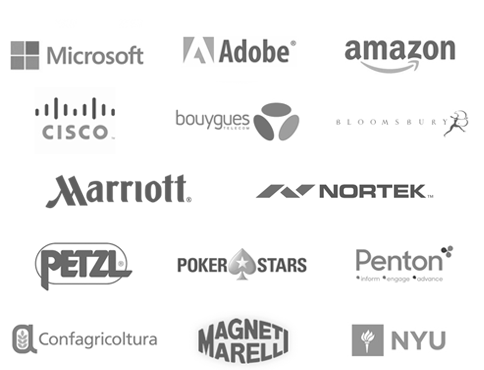We hear a lot about social media marketing in general and Facebook’s ads in particular but despite all of the advances in Internet marketing, no one has yet to come up with a more effective channel to convert buyers than email marketing. In one recent study, marketers ranked email marketing as the most effective digital media channel they use—better than social media marketing, SEO, and affiliate marketing.
The effectiveness of email marketing depends on a number of factors but there’s one ingredient that stands out more than others. The email subject line is the first thing that readers see. It determines whether they open the email and read on, and whether they read on with interest. It might just be a few words at the top of the message, a tiny portion of the whole message, but it’s vital to get it right.
Play typing Subject and Preheader and see in real time what recipients will see in their inbox, this video has been made with MailStyler that offer this amazing tool for free in the last version.
Download Mailstyler for free now
Email Subject Line Best Practices
Although email subject lines leave plenty of room for flexibility and creativity, there are a number of principles that have been found to generate the most clicks and reads.
-
Keep It Short
Assume that readers are going to be looking at your email on their phones. Most do these days. That means you’re going to have limited real estate to communicate a message and pull people in. Cut out any words that you don’t need. Use short words instead of long ones. Aim for a length of between 61 and 75 characters. That’s where you’re most likely to be read.
-
Match the Message to Their Thoughts
One of the benefits of people reading their messages on their mobile phones is that you can talk to them exactly when you want. Restaurants can send out coupons in the early evening, just as subscribers are wondering where to eat. Sports stores can promote shirts during the break in a match. When you know the time you’re subscribers are reading—and what they’ll be doing at that time—you can make the email subject line message match their thoughts.
-
Make the Story Timely
Timeliness doesn’t have to be timed to the minute though. An email subject line can also resonate with an event in the news or even just a season. Email messages that are sent to chime with Christmas or Easter, with the beginning of spring or the start of the school year might be common enough to be traditional but they’re traditional because they work. Include a seasonal keyword in the email subject line and you’ll chime with your subscribers’ concerns. Your message will be relevant, and relevance brings results.
-
Personalize Your Messages
As sellers build data on their customers, they’re able to create sales messages that are highly personalized. Some of that personalization is simple. The email body should contain name tags so that readers know you’re talking to them. But you can also segment your lists based on your subscribers preferred purchases, their gender, or their locations—and put those preference tags in the email subject line.
-
Personalize the Sender
Just as the message in the subject line should feel personal, so should the message itself. Instead of using a generic sending address, such as info@acme.com or worse, noreply@acme.com, use a real email address to which people can reply. Subscribers do see that address as clearly as they see the email subject line. It’s good practice to make it feel personal.
-
Start with Action Verbs
Most calls-to-action come at the end of a marketing message. But an email subject line is a marketing message of its own. It’s a complete call-to-action. So start with a verb that pushes action. Tell subscribers that they should “Test drive the new Subaru” instead of announcing that “The new Subaru has arrived.” An invitation to do something is more exciting than being informed of something.
-
Create Curiosity
Telling people to take action by putting a strong verb at the start can make for a very effective cold email subject line. Another approach that has been found to work very well is to generate curiosity. These are subject lines that often start with a “Why”, as in: “Why you need to test-drive the new Subaru” or “Why pizza-lovers in London always ask for this topping.”
-
Ask a Question
An email subject line that generates curiosity might look like a question but it’s not a question. A real question has a question mark—and can be just as effective, especially when it suggests that the reader is doing something wrong. “Why are you driving a dangerous car?” is an email subject line that’s hard to ignore. “Why are Londoners eating their pizza wrong?” is a more inviting email subject line example than “How Londoners eat their pizza.”
-
Don’t Overdo the Punctuation
One question mark in an email subject line can be a good thing. But a question mark plus an exclamation usually equals a quick dump in the spam folder. “Why are you driving a dangerous car? Drive the new Subaru!” combines a good question with a strong call to action to produce an email subject line that’s likely to be ignored.
Even if they makes it past the spam filter, subscribers are unlikely to read past these kinds of subject lines. They’ve seen them too often and ignored them safely too many times. -
Make an Offer
If a question/answer in the subject line is too overdone to be effective, then you might think that an offer would suffer the same fate. But that isn’t the case. Subscribers join email lists because they want to receive offers. In fact, they expect their subscription to be rewarded by offers that are only available to people who have agreed to receive the company’s newsletters. So don’t be afraid to tell subscribers that they can get a discount if they click a link in the email—and don’t be afraid to put that offer right in the email subject line.
-
Create Urgency
That offer can even be time-limited. In fact, it should be time-limited because if an email isn’t acted on immediately there’s a good chance that it will be buried and ignored. You really want people to click through on their first reading, and feel that they need to click through on that reading.
If they click through and don’t take action, you can send them a second, personalized email. Use a follow-up email subject line that reminds them that the clock is ticking and that they need to buy or lose the bargain. It’s a standard but highly effective technique.
But don’t overdo it. If you’re sending out the same offer every week, subscribers will soon learn that if they don’t take action now, they can always decide to take action in a few days’ time. There’s a good chance that they’ll never take action at all. -
Keep It Easy
Tone is important in a marketing email, even for a B2B marketing email. All email messages fall into the inbox of a person. All sales depend on the feeling that the customer has a real relationship with the business doing the selling. So all emails, including the subject lines, should feel that they’re written from one person to another. That doesn’t mean that you can’t use marketing language or format the email to look like an offer. But it does mean that the language should be friendly and informal. It can, and should, even be humorous. Don’t be afraid to crack a joke.
Business language in the email subject line warns subscribers that they’re about to enter a workspace. It makes them pause and adjust the way they think. (They might even adjust their ties.) Keep the tone light and friendly so that readers feel at home and relaxed enough to read right away. If the subject line promises a laugh, they’ll want to read right away. -
Give Away the Story
Email subject lines that generate curiosity force subscribers to click and read to satisfy that curiosity, but sometimes just telling people what’s in the email can be more effective. If a subscriber is expecting to receive a message, and looking forward to it, then you don’t need to beat about the bush. A subscriber who handed over their email address in return for a free ebook, for example, just wants to get their eyes on that ebook. An introduction email subject line that says “Here’s your ebook” will be enough to get them to click through, download it… and read the rest of your message.
-
Test Your Email Subject Lines
All of these examples of email subject lines have been shown to be effective. But there’s only one way to know whether one particular subject line will be the most effective for your email and to your audience—and that’s to test them. Choose two different email subject lines. Create two sample groups from your subscriber list and run an A/B test. It’s the only way to know for sure which email subject line will get the best results.





